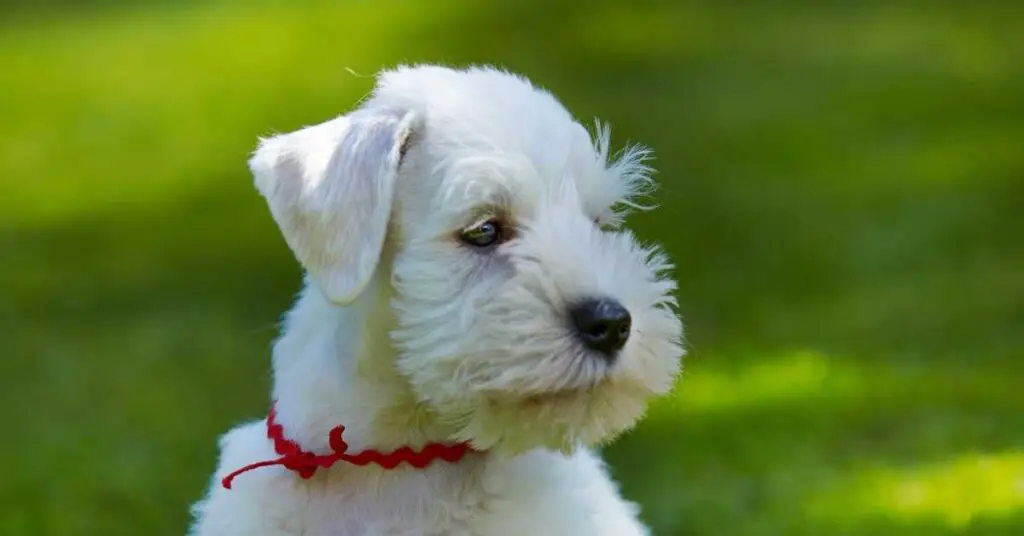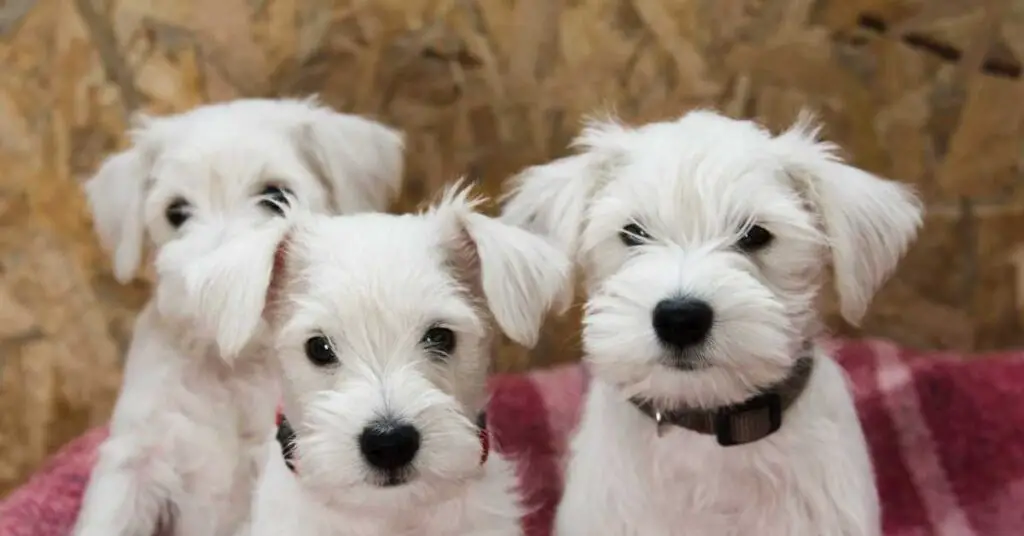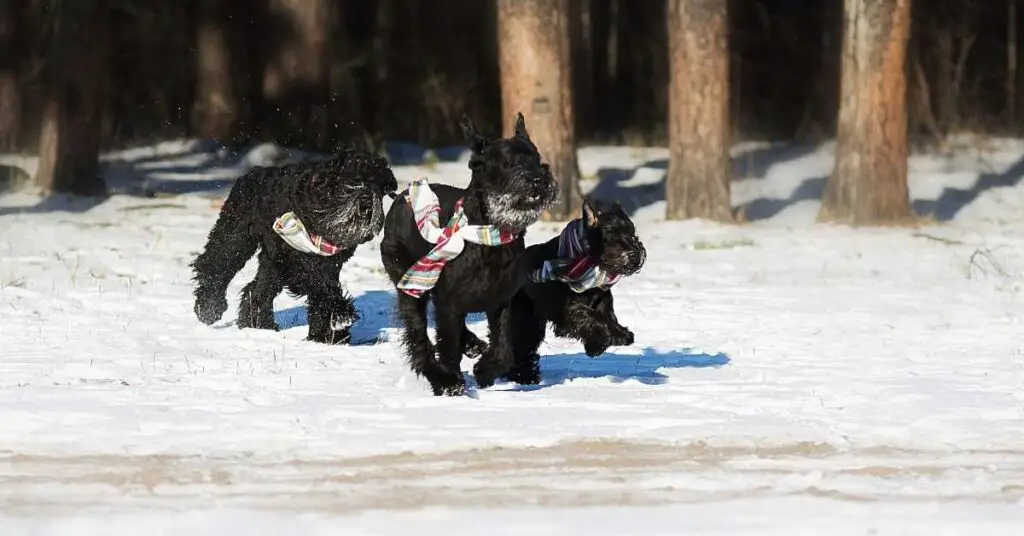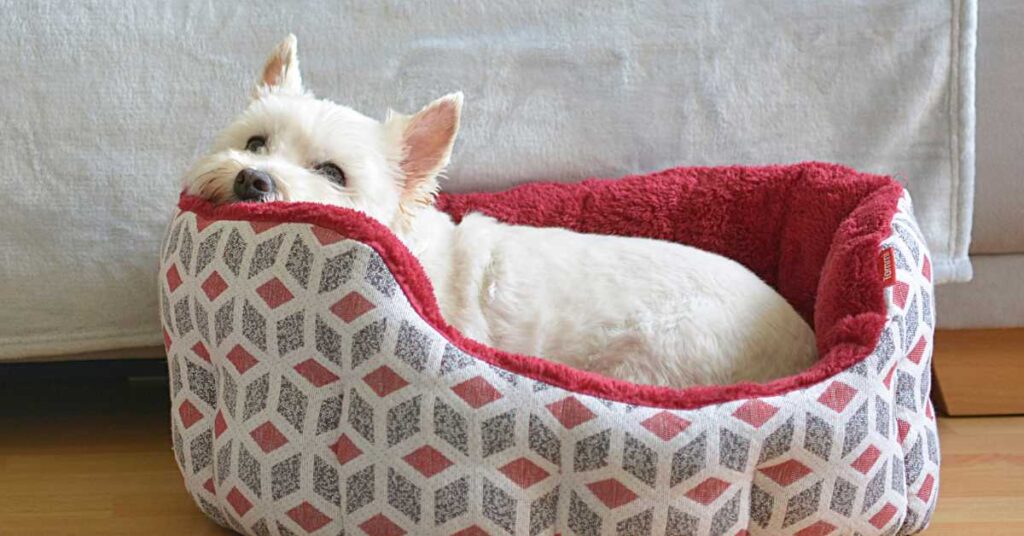Training a Schnauzer puppy is like sculpting a piece of clay. It requires patience, consistency, and a solid plan. From housebreaking to leash manners, each step in your pup’s education is crucial for their development and your bond.
But before you dive into the specifics of training techniques, it’s essential to lay a solid foundation that will set the stage for successful learning.
So, where should you begin on this rewarding journey with your Schnauzer companion?
Key Takeaways
- Clicker training and positive reinforcement are effective for Schnauzers.
- Establish a consistent training routine for better results.
- Socialization, mental stimulation, and bonding are crucial for Schnauzer development.
- Seek professional training assistance for tailored guidance and support.
Choosing the Right Training Approach
When beginning to train your Schnauzer puppy, it’s crucial to carefully consider and select the most suitable training approach that aligns with your pet’s temperament and your training goals. Clicker training can be a fantastic method to teach your Schnauzer puppy new behaviors. The benefits of clicker training include precise communication, positive reinforcement, and the ability to capture desired behaviors effectively.
In addition to individual training methods, you may also want to explore obedience school options. Obedience schools can provide structured training programs led by experienced professionals. This can be particularly beneficial if you’re new to training a puppy or if you feel you need additional guidance. Obedience schools offer a supportive environment where your Schnauzer puppy can learn alongside other dogs, helping them socialize and develop good behavior habits.

Establishing a Routine for Training
To effectively train your Schnauzer puppy, establishing a consistent training routine is essential for success. Consistency is key when it comes to potty training your puppy. Set specific times for bathroom breaks, especially after meals and naps, to help them learn where and when it’s appropriate to go. By doing this, you aren’t only teaching them good potty habits but also establishing boundaries within the home.
Creating a consistent schedule and setting clear expectations are vital components of your training routine. Dogs thrive on routine, so try to feed, walk, and train your Schnauzer at the same times each day. This predictability helps them understand what’s expected of them and reduces confusion during the training process. When setting expectations, be firm yet patient. Schnauzers are intelligent dogs and respond well to positive reinforcement.
Teaching Basic Commands Early
Establish a strong foundation for your Schnauzer puppy’s training by introducing basic commands early on in a consistent and positive manner. Consistency is key when teaching your puppy new commands. Start with simple commands like ‘sit,’ ‘stay,’ and ‘come’ to build a solid communication base between you and your furry friend. Patience pays off as puppies, like humans, learn at their own pace.
Here are three essential tips to consider when teaching basic commands to your Schnauzer puppy:
- Short Training Sessions: Keep training sessions short and frequent to maintain your puppy’s focus and prevent them from getting overwhelmed. Five to ten minutes a few times a day is more effective than one long session.
- Use Positive Reinforcement: Reward your puppy with treats, praise, or playtime when they successfully follow a command. Positive reinforcement helps create a positive association with learning and encourages good behavior.
- Consistent Verbal Cues: Use the same verbal cues for each command consistently. This helps your puppy associate specific words with actions and reinforces their learning.
Using Positive Reinforcement Techniques
For effective training, focus on using positive reinforcement techniques consistently with your Schnauzer puppy. Positive reinforcement involves rewarding your puppy for desired behaviors to encourage them to repeat those behaviors.
Clicker training is a popular method that involves using a clicker to mark the moment your puppy performs the desired behavior, followed by a treat reward. This technique helps your puppy associate the click sound with a reward, making training more effective.
When using treat rewards, it’s essential to choose treats that your Schnauzer puppy finds highly motivating. Small, soft treats that can be quickly consumed work well during training sessions. Remember to keep training sessions short and positive to prevent your puppy from becoming bored or frustrated.
Consistency is key when using positive reinforcement techniques. Praise and reward your puppy every time they exhibit the desired behavior to reinforce their learning.
Socializing Your Schnauzer Puppy
When introducing your Schnauzer puppy to new experiences and environments, focus on gradually exposing them to various people, animals, and surroundings to help them develop into a well-socialized and confident companion. Socializing your Schnauzer puppy is crucial for their overall development and behavior.
Here are some essential ways to ensure your puppy gets the socialization they need:
- Puppy Playdates: Arrange playdates with other friendly and vaccinated puppies to help your Schnauzer learn proper social skills and manners in a safe and controlled environment.
- Obedience Classes, Group Training: Enroll your Schnauzer puppy in obedience classes or group training sessions. These settings provide excellent opportunities for your puppy to interact with different people and dogs while learning essential commands and behaviors.
- Outdoor Adventures: Take your Schnauzer puppy on walks in the park, visits to pet-friendly stores, or outdoor events where they can experience new sights, sounds, and smells. These outings help them feel comfortable and confident in various environments.
Addressing Undesirable Behaviors
To address undesirable behaviors in your Schnauzer puppy, focus on consistent training and positive reinforcement techniques to guide them towards more desirable actions. Potty training challenges can be common, but with patience and a routine, you can help your puppy understand where it’s appropriate to go.
Utilize behavior modification techniques like rewarding them for going in the right place and redirecting them if accidents happen indoors. Addressing chewing habits involves providing appropriate chew toys and teaching them what items are off-limits.
When handling separation anxiety, gradually accustom your puppy to alone time, starting with short periods and slowly increasing them. Positive reinforcement when they stay calm during separations can help ease their anxiety.
Crate Training for Schnauzers
If you’re looking to establish a safe and comfortable space for your Schnauzer puppy, consider crate training as a valuable tool in their development. Crate training can help with housebreaking and provide a secure environment for your puppy when you can’t supervise them directly. Here are some tips to make crate training a positive experience for both you and your furry friend:
- Start Slow: Introduce the crate gradually, allowing your Schnauzer puppy to explore it at their own pace. Make the crate inviting with a soft blanket and some toys.
- Positive Reinforcement: Encourage your puppy to enter the crate by placing treats inside. Praise them when they go in and avoid forcing them into the crate.
- Consistency is Key: Use the crate consistently for meals, nap times, and when you’re unable to watch your puppy. This routine will help them see the crate as a safe space.
Incorporating Mental Stimulation Activities
As your Schnauzer puppy becomes more comfortable with their crate, it’s beneficial to incorporate mental stimulation activities to keep them engaged and mentally sharp. Puzzle games and interactive toys are excellent choices to challenge your puppy’s cognitive abilities. These activities not only provide mental exercise but also help prevent boredom, which can lead to destructive behaviors.
Introducing obedience challenges and problem-solving tasks can further stimulate your Schnauzer’s mind. Teaching new commands or tricks not only keeps them mentally engaged but also strengthens the bond between you and your puppy. Engaging in activities that require them to think and solve problems will help develop their intelligence and keep them mentally active.
Training for Leash Walking
When beginning leash walking training with your Schnauzer puppy, start in a quiet and familiar environment to help them feel more comfortable and at ease. Here are some tips to guide you through this training process:
- Treat Motivation: Use treats to motivate your Schnauzer puppy during leash walking training. Offer a small treat when they walk beside you calmly without pulling on the leash. This positive reinforcement will encourage them to exhibit the desired behavior.
- Behavior Shaping: Practice behavior shaping by rewarding small steps towards the desired behavior. For example, reward your puppy for walking a few steps without pulling on the leash. Gradually increase the distance before offering a treat to shape their behavior effectively.
- Clicker Training for a Loose Leash: Incorporate clicker training to teach your Schnauzer puppy to walk on a loose leash. Click and treat when they walk without pulling, reinforcing that walking beside you calmly is the desired behavior. Consistent practice will help your puppy understand and maintain a loose leash while walking.
Seeking Professional Training Help
For further guidance on refining your Schnauzer puppy’s leash walking skills and addressing any training challenges, consider seeking assistance from a professional trainer familiar with the breed’s tendencies and behaviors. Finding experts who specialize in training Schnauzers can greatly benefit both you and your furry companion. These trainers have the knowledge and experience to understand the specific needs of Schnauzers, helping you navigate through the training process more effectively.
Professional trainers offer valuable training resources that may not be readily available through self-learning or general training guides. They can provide personalized guidance tailored to your Schnauzer’s personality and learning style. By working with a professional, you gain access to techniques and strategies that are proven to be effective for Schnauzers, ensuring that your training sessions are productive and successful.
Frequently Asked Questions
What Are Some Common Health Concerns to Watch Out for in Schnauzer Puppies During Training?
Watch out for common health concerns in schnauzer puppies during training. Keep an eye on grooming needs to prevent skin issues. Ensure proper exercise to maintain their health. Regular vet check-ups are essential for early detection and prevention.
How Can I Effectively Potty Train My Schnauzer Puppy?
To effectively potty train your schnauzer puppy, start with crate training and positive reinforcement. Use puppy pads and maintain consistency. By setting a routine, praising good behavior, and being patient, your furry friend will learn in no time.
Are There Any Specific Dietary Recommendations for Training a Schnauzer Puppy?
When it comes to training a Schnauzer puppy, specific dietary recommendations play a crucial role. Providing the right nutrition tailored to their growth stages, along with using training treats effectively, helps in fostering puppy socialization and behavior training.
How Do I Introduce My Schnauzer Puppy to Other Pets in the Household During Training?
When introducing your schnauzer puppy to other pets, start slow. Use positive reinforcement and reward good behavior. Practice puppy socialization regularly and supervise interactions. With patience and consistency, you can modify behavior and help your puppy adapt to its new furry friends.
Can I Start Training My Schnauzer Puppy at a Very Young Age, or Should I Wait Until They Are Older?
You can start training your schnauzer puppy at a young age. Socialization techniques and behavior modification are essential early on. Use positive reinforcement and gentle training methods. Building a strong foundation now will help shape a well-behaved adult dog.
Conclusion
In conclusion, training a Schnauzer puppy requires patience, consistency, and positive reinforcement.
By choosing the right training approach, establishing a routine, teaching basic commands, socializing, crate training, incorporating mental stimulation activities, and practicing leash walking, you can help your puppy become a well-behaved and happy companion.
Remember to seek professional training help if needed, and enjoy the journey of bonding and growing together with your Schnauzer puppy.
Happy training!




